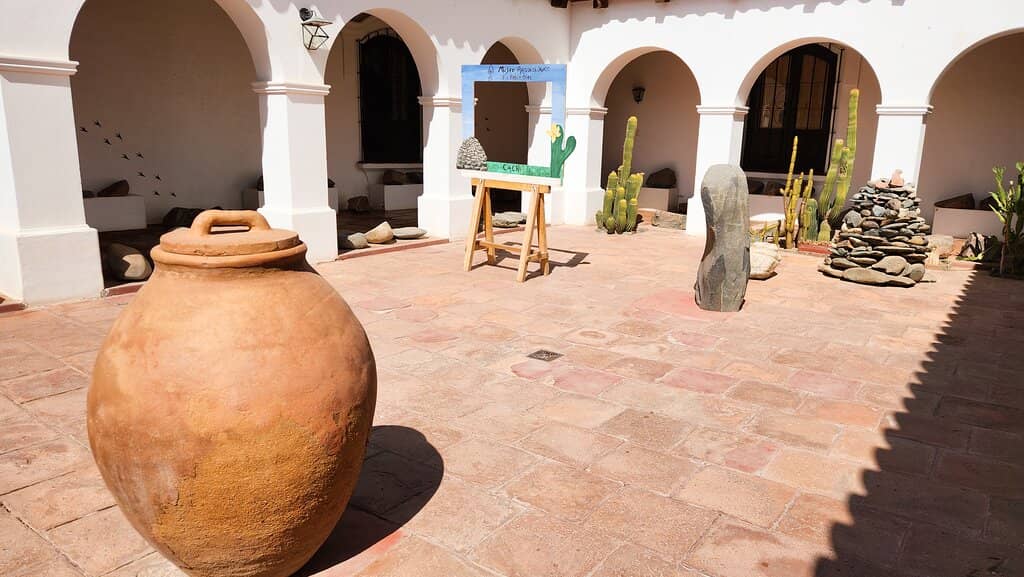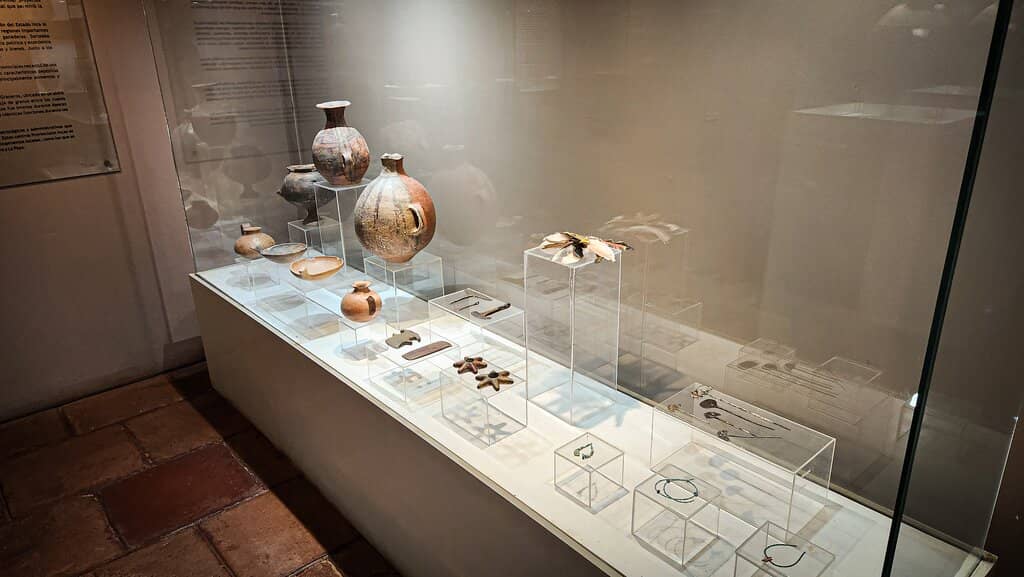
Museo Arqueológico Pío Pablo Díaz
Discover 10,000 years of Calchaquí Valley history through artifacts from hunter-gatherers to the Inca era.

Highlights
Must-see attractions

Social
From TikTok & Reddit
Best Time
Fewer crowds, more peaceful viewing

Museo Arqueológico Pío Pablo Díaz
Best Time
Fewer crowds, more peaceful viewing

Highlights
Must-see attractions
Discover 10,000 years of Calchaquí Valley history through artifacts from hunter-gatherers to the Inca era.
"It's a very worthwhile visit, offering a deep dive into the region's past. "

⏳ Quick Visit
The entire tour takes about 30 minutes, perfect for a brief cultural stop. :stopwatch:
📚 Books for Sale
You might find interesting books related to local history and archaeology available for purchase. :books:

Highlights
Discover the most iconic attractions and experiences

Calchaquí Valley Artifacts
Discover a rich collection representing 10,000 years of pre-Hispanic history in the region.

Hunter-Gatherer to Inca Periods
Trace the evolution of cultures from early settlers to the Inca influence.

Pío Pablo Díaz Collection
Explore the foundational archaeological donations that established the museum.
Plans like a pro.
Thinks like you
Planning Your Visit
Understand the Collection's Scope
Manage Expectations for Interactivity
Best Times
Insider Tips
from TikTok, Instagram & Reddit
⏳ Quick Visit
The entire tour takes about 30 minutes, perfect for a brief cultural stop. :stopwatch:
📚 Books for Sale
You might find interesting books related to local history and archaeology available for purchase. :books:
💰 Affordable Entry
Admission is inexpensive, making it an accessible cultural experience. :moneywithwings:
📍 Central Location
Conveniently located in Plaza 9 de Julio, easy to find. :round_pushpin:
Tips
from all over the internet
⏳ Quick Visit
The entire tour takes about 30 minutes, perfect for a brief cultural stop. :stopwatch:
📚 Books for Sale
You might find interesting books related to local history and archaeology available for purchase. :books:
💰 Affordable Entry
Admission is inexpensive, making it an accessible cultural experience. :moneywithwings:
📍 Central Location
Conveniently located in Plaza 9 de Julio, easy to find. :round_pushpin:
What Travellers Say
Reviews Summary
Visitors find the Museo Arqueológico Pío Pablo Díaz to be an informative and inexpensive stop, offering a glimpse into the rich pre-Hispanic history of the Calchaquí Valley. While not interactive, its well-organized collection spanning 10,000 years is highly valued by those interested in archaeology and local heritage.
"No English speaking stuff"
Yuval Shahar
"Right in Plaza 9 de Julio is the Pio Pablo Días Archaeological Museum. It's an inexpensive museum where you can see how each historical moment is organized. I also noticed there were books for sale. It's not interactive, but it's very interesting to visit."
julio cañizalez
"If you're in Cachi, you have to go to the museum. It's not interactive like any museum of this century, but it's okay.
Being Argentinian, we paid $3,000 each."
Rosario Avila Gallo
What People Like
What People Dislike
Frequently Asked Questions
🚇 🗺️ Getting There
The museum is centrally located in Cachi, right on Plaza 9 de Julio, making it easily accessible on foot if you're staying in town.
Street parking is generally available around Plaza 9 de Julio, but it can be busy. Consider arriving early or walking if possible. :car:
Yes, its central location makes it a common stop on walking tours or self-guided explorations of Cachi. :walking:
🎫 🎫 Tickets & Entry
Opening hours can vary, so it's best to check locally or with your accommodation. Generally, it's open during typical daytime hours. :clock1:
Admission is very affordable, with a small fee for entry. Argentinian visitors paid ARS 3,000 each at one point. :moneywithwings:
Advance booking is typically not required for this museum; you can usually purchase tickets upon arrival. :ticket:
Information on specific discounts isn't widely available, but the general admission price is quite low. It's worth inquiring at the ticket counter. :bustsinsilhouette:
🎫 🧭 Onsite Experience
The museum displays archaeological artifacts from the Calchaquí Valley, showcasing its pre-Hispanic history across various periods. :ancient_ruins:
No, it's a traditional museum with displays of artifacts rather than interactive exhibits. :computer:
A visit typically takes around 30 minutes to an hour, depending on your interest level. :hourglass:
While not interactive, children can learn about history. The displays are straightforward and informative. :child:
Guided tours are not commonly advertised, but the exhibits are well-organized and informative on their own. :map:
📸 📸 Photography
Photography policies can vary. It's best to check for signage or ask staff if photos are permitted, especially without flash. :camerawithflash:
Focus on capturing the details of the ancient artifacts and the overall presentation of the exhibits. :iphone:
For Different Travelers
Tailored advice for your travel style
👨👩👧 Families with Kids
🏛️ History Enthusiasts
🚶 Day-Trippers from Salta
Deep Dives
In-depth insights and expert knowledge
The Pío Pablo Díaz Collection: A Legacy of Discovery
This collection is not just a random assortment of items; it's a curated historical record. It reflects the entire pre-Hispanic history of the Calchaquí Valley, a span of approximately 10,000 years. Visitors can trace the evolution through distinct periods: the Hunter-Gatherer era, the Formative Period, the Regional Development Period, the Inca Period, and the Hispanic-Indigenous Period. This chronological depth allows for a profound understanding of the cultural shifts and developments that shaped this unique region.
Understanding the Calchaquí Valley's Pre-Hispanic History
Visitors can gain insights into the daily lives, spiritual beliefs, and technological advancements of these ancient peoples. The presence of Inca influence also highlights the broader historical context of the Andes region. The museum's focus on this specific geographical area provides a concentrated and detailed perspective, making it an invaluable resource for anyone interested in Argentine archaeology and the indigenous cultures of South America.


Social
from TikTok, Instagram & Reddit